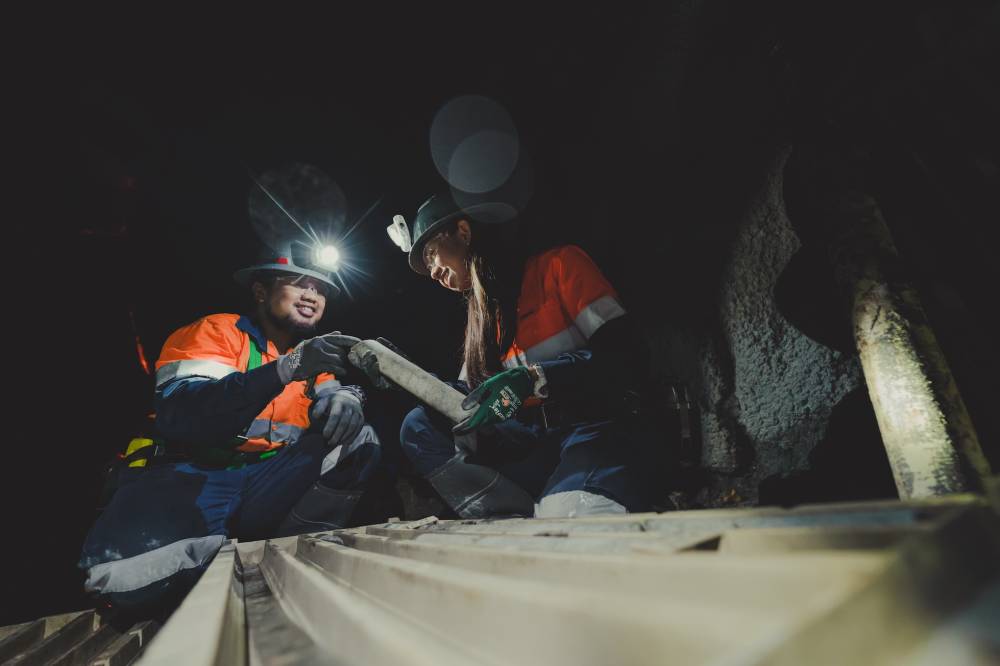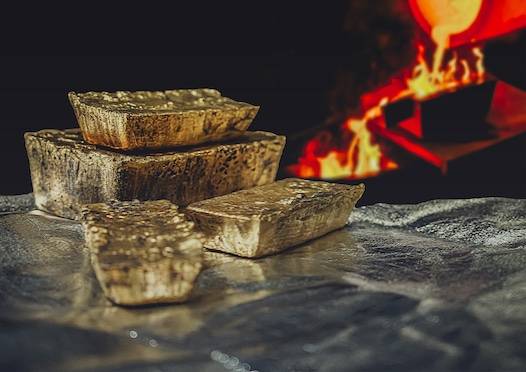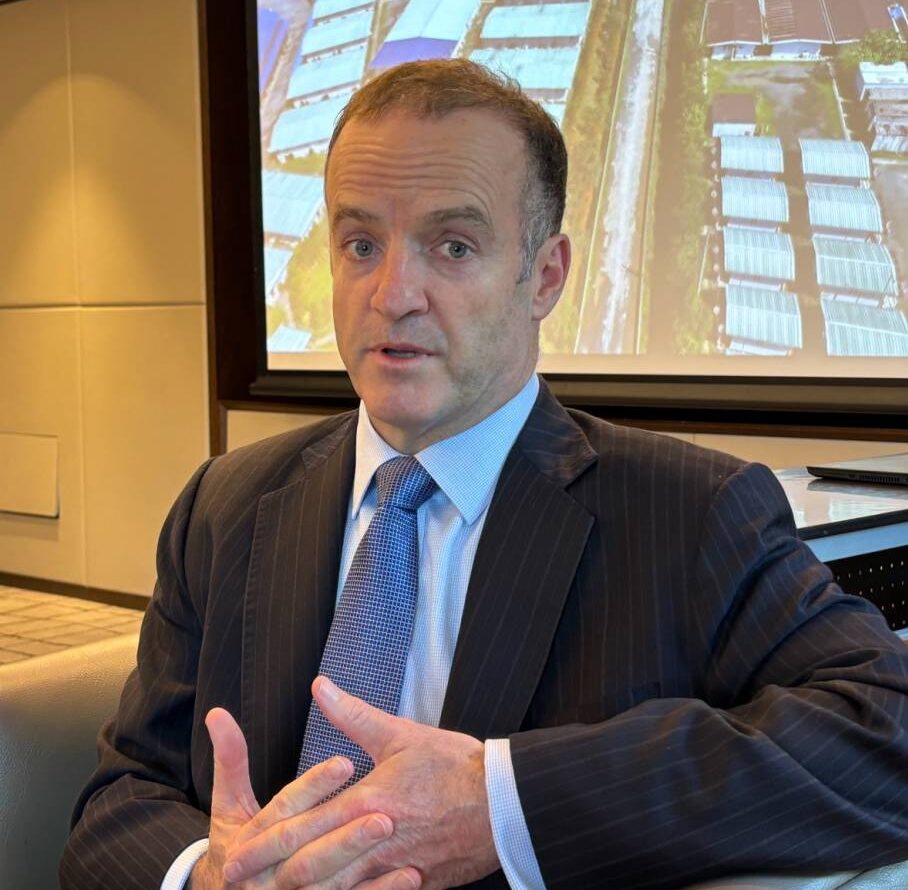Gold miner kicks off 2024 IPO market

GOLD DIGGER GeoTechnical personnel inspecting underground samples at Didipio mine. —CONTRIBUTED PHOTOS
For the first time in more than a decade, a Philippine mining firm is going public. And while many are shying away from the stock market due to a string of global uncertainties, OceanaGold (Philippines) Inc. (OGPI)—the second largest producer of gold and copper in the Philippines and a unit of Toronto-listed OceanaGold Group—is ready to brave it all.
The P6-billion initial public offering (IPO) of OGPI, which will raise the curtain for the local IPO market this year, comes at a time when the government is no longer averse to mining.
But what OGPI is really banking on is the buoyant pricing of the precious metals produced by its 7,750-hectare Didipio mine, which straddles the provinces of Nueva Vizcaya and Quirino.
Gold, historically a storer of value and a “safe haven” asset, is hitting record-high prices at the global market, driven by strong demand from central banks. Geopolitical tensions, like the war in Ukraine and Gaza Strip, aren’t expected to reduce its luster.
Copper, on the other hand, is a metal essential to the global energy transition as it is needed to build electric vehicles as well as renewable energy systems like solar panels and wind turbines.
“That combination of being both a gold and copper producer gives it the broadest appeal to the investor universe and government agencies as well,” OceanaGold Group CEO Gerard Bond tells the Inquirer in an interview.
“But the fact is that we’re bringing this to market because it’s a requirement of our FTAA (Financial or Technical Assistance Agreement) renewal,” Bond says.
The FTAA had been executed in 1994 and renewed in 2021 for an additional 25-year period starting 2019.
Under its FTAA, the government receives 60 percent of net revenue from the mine and OGPI receives the remaining 40 percent. All taxes and fees paid to the government are deducted from the government’s 60 percent share of net revenue.
Last April 23, OGPI remitted P1.1 billion in additional government share for the first time to the government pursuant to the terms of its FTAA.

Gold doré bars produced at Didipio mine
90% dividend policy
“Didipio is one of the lowest-cost mines in the industry. It’s got a fabulous ore body that produces both copper and gold. It’s got a history of producing at low cost reliably and consistently. It generates a lot of cash. That means that it will be able to pay a good dividend back to all shareholders. It’s got a history of exploration success,” Bond says.
In 2023, OGPI chalked up $26.8 million in net profit out of $371.1 million revenues. It sold 135.7 koz (thousand ounces) of gold at an average price of $1,974 per ounce. It also sold 13.8 kilotons (kt) of copper at $3.87 per pound on average.
This 2024, the company expects to produce 120 to 135 koz of gold and 12 to 14 kt of copper, and expend growth capital of $10 to $15 million, based on its prospectus.
As a dividend policy, its prospectus shows that OGPI targets the payment of 90 percent of its free cash flow from each past year as dividend payment. It started paying dividends in December last year, amounting to $1.84 million.
For this offering of 456 million shares priced at P13.33 each, all are secondary shares.
OGPI “doesn’t need more money,” Bond points out, when asked why no primary shares are up for grabs. “It pays for itself now, so there’s no reason to raise money and keep it inside.”
The offering runs from April 29 to May 6, while listing of shares on the Philippine Stock Exchange is scheduled on May 13.“OceanaGold parent company continues to own it and it’s a key part of our portfolio, and that means that we are committed to the ongoing success of OceanaGold Philippines because it’s so central to us,” Bond says.
Didipio is one of the four operating mines of OceanaGold. Two others are in New Zealand and one is in South Carolina, United States.
“Going forward, it (Philippines) has the potential to be around 20 to 25 percent of our production,” Bond says.
“But in terms of profitability, it’s our most profitable mine. It’s the lowest-cost mine. By lowest costs, [it means] it’s got the best combination grades … It’s the only mine that we have that produces both gold and copper. And when you get two metals to sell from one activity, that makes it profitable and highly cash generative,” Bond says.

Gerard Bond OceanaGold Group CEO
Expansion potential
OGPI still sees a lot of opportunity within its existing FTAA. After starting commercial production in 2013, the open pit mine at Didipio was completed in 2017. Underground mining began in 2015.
It now has all the open pit materials at surface, or its stockpile, amounting to 18 million tons. Mining activities are now solely from underground.
“We can grow it (Didipio mine) by continuing to explore underground and we had some fabulous drill results that we released to the market last year, and again in February, showing that at depth, just the nature this ore body has tremendous upside,” Bond says.
Furthermore, about 9 kilometers away from Didipio is the Napartan prospect. The company is now working on the permitting process.
“Geologists think it could be almost identical to Didipio and Didipio has been a great mine, one of the best mines in our industry and if Napartan could be like that again, we could develop another Didipio mine. My vision is that we continue to get the full potential of the mine here, increase the mining right, extend its life through exploration, and find another Didipio,” he says.
For now, the mining life based on known reserves at Didipio is until 2035.
“What has happened is every year, we add to the reserves. So since 2013, when we first declared the mine, we had 1.6 million ounces of reserve and after 11 years of operation, we still have 1.1 million ounces of reserves and we produce 1.6 million ounces of gold. That’s the nature of the ore body; as we continue to mine at depth, we find more, so I think the life can be longer than the 10 years of us,” he says.
OGPI took control of Didipio mine in 2006 through acquisition. Asked whether it is keen on buying other mining assets outside of North Luzon, Bond says the group would consider, if the the opportunity presents itself.
“Right now, the best opportunity we have is to expand Didipio and the second best opportunity we have is to drill Napartan. So we have to deliver what we have rather than keep hunting butterflies,” he says.
Risk management
While Didipio has been a lucrative mine for OGPI, it’s not always a walk in the park for the company. In this country, mining isn’t just highly regulated but also highly politicized.
In the case of OGPI, there’s a pending legal tug of war between the provinces of Nueva Vizcaya and Quirino on which is the taxing authority over the company. The company has an interim agreement with Nueva Vizcaya pending final resolution of the case.
Ahead of its IPO, a bishop and several civil society groups petitioned the Regional Trial Court of Bayombong to cancel the FTAA renewal, alleging lack of consultation and adverse effects on the environment. The court denied the prayer for the issuance of temporary environmental protection order, adding that the petition would be included in the regular raffle of cases.
How does the company hedge against such risks?
“I think the most important thing to do is, as we do, mine safely and responsibly. Safely means you’ve got to you have to create a safe workplace for your people and responsibly means being responsible both from an environmental and community perspective,” Bond says.
He explains a range of programs that support local communities and the host provinces.
Bond says OGPI regularly conducts a dialogue with the community and make sure the company understands their concerns.
For instance, the company allots 1 percent of its net revenue to fund OGPI’s Community Development Fund, which supports a range of projects across 400 barangays in both Nueva Vizcaya and Quirino provinces, whether it’s building a school, a gym or a water treatment plant.
Another half a percent is devoted to the Provincial Development Fund.
Then there’s another discretionary spending that goes to corporate social responsibility program. “It’s been our biggest investment to date, around P1.6 billion over a decade,” he says.
All these, he says, are in line with the group’s mission of “mining gold for better future.”
OGPI supports 500 scholars on their college education, 75 of whom are indigenous people.
“So we have over 200 graduates that we have brought into the world across a number of disciplines and engineering —not all of whom come to work at our mine, but we are actually investing in the education of people,” he says.
OGPI’s programs primarily focus on health, education and access (road improvements). It has paved a number of roads to build farm to market access.
“So if you’re doing the right thing by the people who work there, the right thing by the environment and the right thing by our community, I hope our best form of risk management is that people see that mining creates value for a broad number of people, and that we do it well. And if we keep doing those two things, governance will change. And we have to make sure we can operate across any spectrum of government,” Bond says.
“But if we if we do what we say we’re going to do and do it well and abide by the law, that’s our best risk management insurance.”
